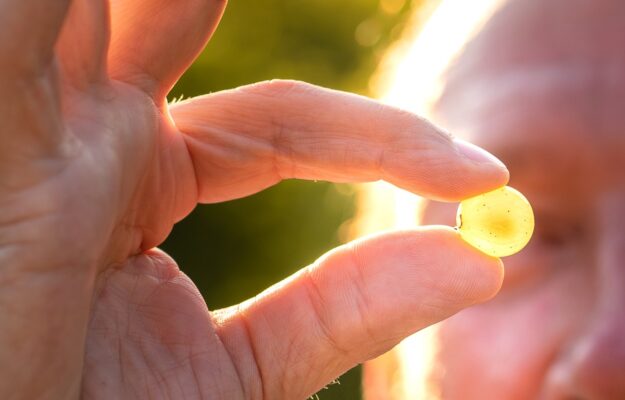Despite the grapes’ difficult health situation, the harvest has a medium-high qualitative potential, currently equal to 76/100: this is how agronomist Giovanni Bigot analysed the 2023 vintage using the Bigot Index, a method for evaluating the qualitative potential of the vineyard that considers the nine most important agronomic parameters - height and production of the leaf wall and their relationship, health of the grapes, age of the vineyard, type of water supply, morphology of the bunch, biodiversity of the surface and subsoil - crossing data collected during the harvest. The potential, while still limited, is particularly high for white grape varieties and black grape crus. Furthermore, for the sparkling wine bases, an excellent vintage is normally expected.
In terms of weather, the period between July 28 and August 28 in Italy was 50 to 100% rainier than average, resulting in an increase in average berry weight and a decrease in sugars. In terms of temperatures, low temperatures were found in all of the monitored wine-growing areas that were lower than the historical average (19.2 °C): this is an excellent indicator of harvest quality. The maximums, on the other hand, were slightly higher, but the number of days exceeding 35 °C more than doubled over the last decade (+122%). The temperature range was among the highest recorded in the last 39 years, with average temperatures that were not too high, ensuring grapes with high viticultural potential in terms of aroma and wine longevity.
Despite the variety of wine-growing areas considered, the data examined through the Bigot Index during the 2023 season clearly describes the situation. In particular, the water deficit in the 2023 vintage was of medium intensity favouring the development of a greater leaf surface, as well as an important vigor of the vines. As a result of these conditions, production per vine has increased significantly. Biodiversity, which is on the rise, has contributed to keeping vineyards in balance and extending their life.
Looking back, this year’s weather, as it emerges from the comparison with the previous seasons, through a statistical clustering approach to associate and compare the weather data and the historical averages of the last thirty-nine years in Italy, in the period between July 28 and 28 August, from veraison to the beginning of the harvest, was similar to that of 1985 for the North East, 2021 and 2003 for the Centre, and 2000 for the North West. In all cases, these are years with above-average rainfall, high-temperature ranges, and minimum temperatures.
“The quality of the grapes - explains Giovanni Bigot - is strongly influenced by the soils, by the meteorological trend and, most importantly, by the agronomic practices. However, soils do not change over time, whereas weather changes a lot. The man does the rest: he modifies, adapts, and attempts to shape the vine to his ideas, needs, and available techniques. Human work is essential to this: by adopting a rigorous holistic method, much can be done to improve vineyard management. Investing in its application is critical to ensuring sustainable and high-quality wine production in any circumstance”. On the other hand, the health of the grapes was delicate, with the 2023 vintage proving to be “one of the most difficult, given the variability of cases and the objective problems to be faced. The phytosanitary pressure was undoubtedly significant, but those who took a careful and precise approach to vineyard management suffered negligible damage”, concludes the agronomist.
Copyright © 2000/2025
Contatti: info@winenews.it
Seguici anche su Twitter: @WineNewsIt
Seguici anche su Facebook: @winenewsit
Questo articolo è tratto dall'archivio di WineNews - Tutti i diritti riservati - Copyright © 2000/2025









































































































































































































